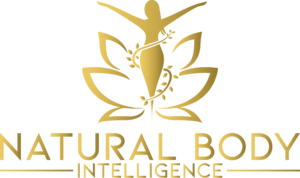The Natural Hygiene Approach to True Liver Healing
Fatty liver, often caused by poor diet and lifestyle choices, is increasingly common — but it’s also reversible. Natural Hygiene doesn’t rely on supplements, drugs, or extreme detoxes. Instead, it helps the body return to balance through intelligent living and by removing the causes of disease, not fighting the symptoms.
Here’s how to support your liver to release excess fat and heal itself — gently, naturally, and for good.
1. Stop the Cause
Fatty liver is often the body’s response to overload — especially from:
- Highly processed foods
- Refined sugar and flour
- Alcohol
- Excess fats (especially heated oils and animal products)
- Stimulants like caffeine and nicotine
- Overeating and constant snacking
The first step in healing is to stop adding fuel to the fire. Remove the irritants, and the body can begin to cleanse the accumulated waste.
2. Simplify Your Diet
The liver loves simplicity. A diet based on whole, raw fruits and vegetables gives the liver exactly what it needs:
- Fibre to help bind and eliminate toxins
- Hydration to flush waste easily
- Natural sugars in fruit to gently energise without overloading the pancreas
- Enzymes and antioxidants to support cell repair
Stick to monomeals or simple combinations (e.g. fruit in the morning, leafy greens and non-fatty vegetables later in the day). Avoid mixing fats and sugars, which create internal fermentation and sluggish digestion.
3. Fast Intelligently
Fasting is a core Natural Hygiene practice — not to force healing, but to allow it. Even short fasts (1–3 days) give the liver a break from processing food and free up energy for detoxification and repair.
Start with a 24-hour water fast or a day of eating only juicy fruits. Over time, build up to longer fasts with guidance. This gives the body the ideal internal environment to break down excess liver fat and cleanse naturally.
4. Rest Deeply
The liver works hardest at night. Poor sleep prevents proper regeneration. Prioritise:
- Early bedtimes (by 9–10pm)
- Complete darkness
- No food or stimulation before sleep
Emotional rest is just as important. Chronic stress impacts liver function. Calm the nervous system through deep breathing, nature, and letting go of inner pressure.
5. Avoid Medicinal Overload
Many common medications (including painkillers, statins, and antacids) burden the liver. Natural Hygiene encourages reducing or eliminating unnecessary drugs under guidance, and addressing root causes with natural means.
Herbs, supplements, and liver tonics may seem “natural,” but they are still stimulants or irritants. The liver needs less interference, not more.
6. Move Gently Every Day
Regular movement improves circulation, supports lymph flow, and helps mobilise fat from the liver. Choose light, enjoyable activity:
- Walking in fresh air
- Gentle stretching or yoga
- Rebounding or dancing
- Swimming or cycling
No need for intense workouts. Just help the body move waste and oxygenate tissues.
7. Let the Body Lead
Natural Hygiene is based on trusting the body. The fatty liver didn’t happen overnight — and it won’t go away in a weekend cleanse. Be consistent. Remove the causes. Provide the conditions for healing. Then get out of the way.
Your liver is a magnificent organ with the power to regenerate. It doesn’t need fixing — it needs freedom.
Fatty liver disease (FLD), particularly nonalcoholic fatty liver disease (NAFLD), has emerged as the most prevalent chronic liver condition worldwide, affecting approximately 25% to 30% of the global population. This condition is closely linked to the rising rates of obesity, type 2 diabetes, and metabolic syndrome. NAFLD encompasses a spectrum ranging from simple hepatic steatosis to nonalcoholic steatohepatitis (NASH), which can progress to cirrhosis and liver cancer. The disease is often asymptomatic in its early stages, making early detection challenging. Risk factors include obesity, insulin resistance, high cholesterol, and hypertension. Lifestyle modifications, such as weight loss, healthy eating, and regular exercise, are the primary interventions for managing and potentially reversing NAFLD.Mayo Clinic+1en.wikipedia.org+1
For more detailed information, you can visit the following resources:
- Mayo Clinic – Nonalcoholic Fatty Liver Disease
- MedlinePlus – Fatty Liver Disease
- American Liver Foundation – Fatty Liver Disease
Conclusion
You don’t need liver flushes, supplements, or crash diets to heal a fatty liver. The Natural Hygiene path is simple, elegant, and sustainable. By removing what harms and providing what supports, your body will do the rest.


